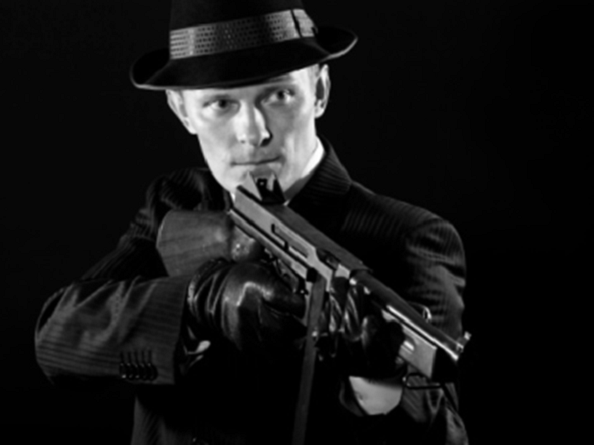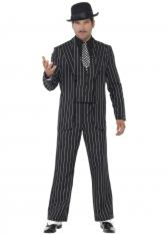
From 1920 until 1933, there was a nationwide ban across the United States regarding the production, sale, importation and transportation of alcohol. This dry movement has become known as the Prohibition era. At a time of economic prosperity and cultural dynamism, it soon became clear that many of those living during the Roaring Twenties would not adhere to the ban and this only served to fuel the illegal trade of alcohol and crime in America.
When you think of gangsters during the 1920s, Al Capone and Chicago will surely spring to mind. This famous gangster has been portrayed on film through the decades since and is currently one of the most prominent characters in HBO’s long-running period drama series Boardwalk Empire, which is set during this era. Robert De Niro’s performance as Capone in The Untouchables (1987) and Rod Steiger in the title role of Al Capone (1959) are two of the most memorable.
The real Al Capone shot to prominence under the city’s leading underworld figure Johnny Torrio and had the police and politicians on his payroll during his time of power. Capone and his violent gangland activities made him one of the most notorious American gangsters of the 20th century, so it is no surprise that many films have been made about him and that the stereotypical mobster image has come to be based on him too. Indeed, photos of the crime lord wearing a pinstripe suit and tilted fedora have provided the blueprint for the iconic 1920’s gangster fancy dress costume.

If you watch a selection of films in the crime genre, you will notice that many of the things you would associate with Al Capone’s character and personality are now the staple for what you can expect from gangsters featuring in these movies, which are often categorised as detective-mystery or post-war film noir.
Crime and gangster films have been popular since the 1930s and the ‘pursuit of the American Dream’ lies at the heart of many of the stories. These morality tales of characters doomed to failure often glorify the rise and fall of a particular gang or lawbreaker.
Warner Bros. was the producer of many of the earlier gangster flicks, with Humphrey Bogart and James Cagney often taking the lead in these classic movies. The Public Enemy (1931) is a fine example of a film which had all the ingredients for success, where the latter played the role of a young hoodlum rising up the ranks of the Chicago underworld.
The brutal side of gangster life is often seen in the depiction of Italian-American immigrant gangsters. Scarface: The Shame of a Nation (1932) by Howard Hawks painted a disturbing picture of criminals that showed the lengths an ambitious and ultra-violent gangster may go to in order to reach the top.
&nb
More than 50 years later and Brian de Palma’s popular Scarface (1983) remake was also criticised by some as being just too brutal for viewers. This tribute to the original may have taken the setting to Miami, but Al Pacino’s Cuban immigrant Tony Montana was just as emphatic in succumbing to greed in Florida as Tony Camonte was as he strived for total control of Chicago.
While over the years, the settings and circumstances may have changed, the majority of gangster-themed films still take some inspiration from American gangsters of the 1920s. The larger-than-life figure of Al Capone is still regarded as the atypical crime boss and even the smart and determined Michael Corleone in The Godfather (1972), a man burdened by responsibility, someone who was never expected to join the Mafia, shows tragic character flaws that end up in recriminations he can’t escape – that result in the ultimate cost to himself as well as those around him.





